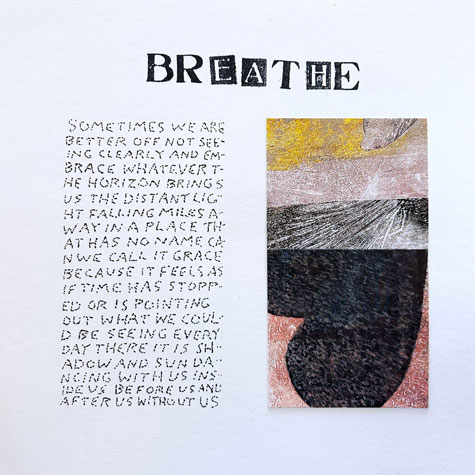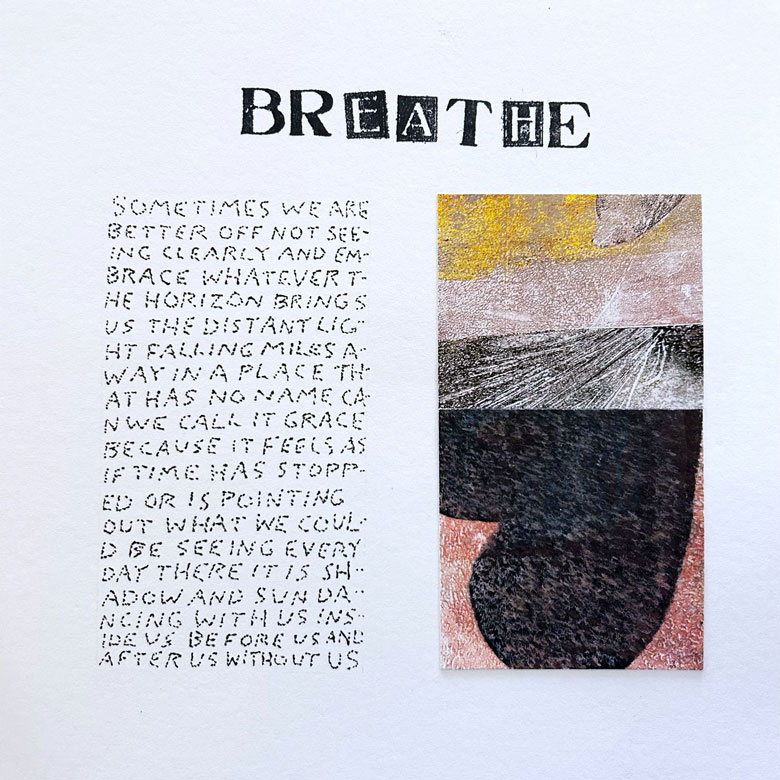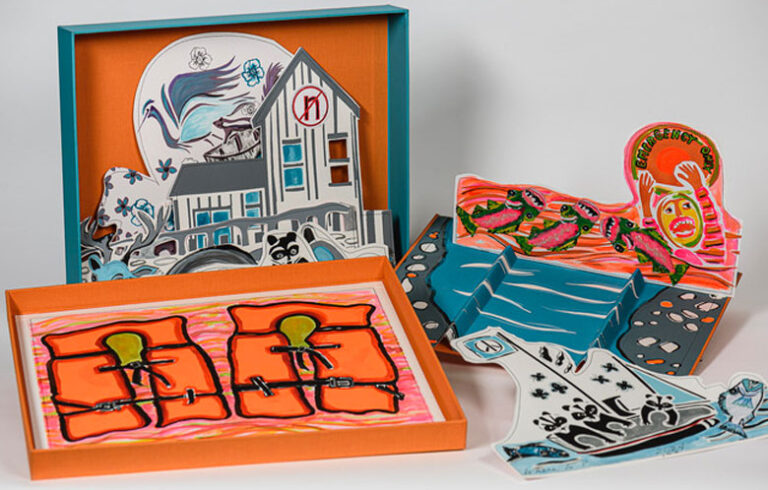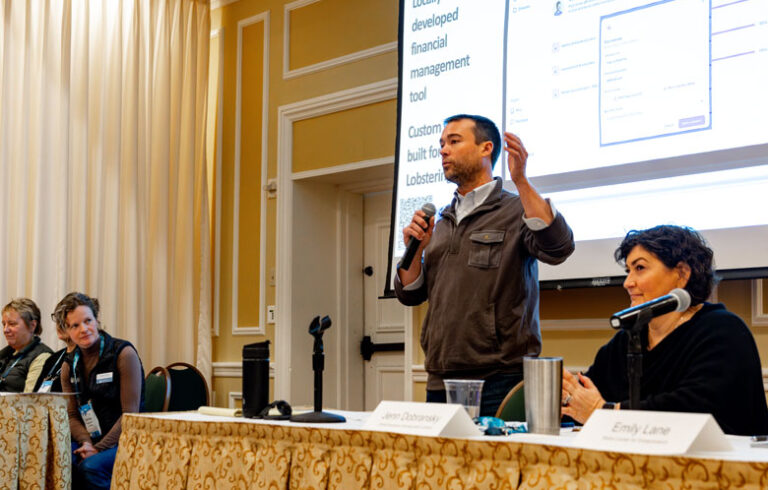A Quiet Book: Collaborations in Writing and Visual Art
By Susan Webster & Stuart Kestenbaum (Brynmorgen Press)
Over the years, artist-activist Susan Webster and her husband, poet Stuart Kestenbaum, have teamed up to create a variety of text/image artwork. A Quiet Book began during the couple’s residency on Fogo Island off the northeast coast of Newfoundland.
Webster had brought along a cache of scraps from previous artwork to create collages, an approach inspired by the late David Driskell (1931-2020). Kestenbaum responded to her images, each poem hand-written using a Micron pen to make the dots to form the letters.
As the poet explained during a talk at Cove Street Arts in Portland, the pair works this way “because [Susan’s] work has more ambiguity and is open to textual response.”
Composed in one go—“no safety net,” Kestenbaum noted—the words (all caps) and lines are arranged—and broken—to fit a defined space, with no punctuation to slow them down. Describing himself as “a kind of demented Torah scribe,” he embraced the format’s limitations, using ampersands and stretching words to make everything fit.
Describing himself as “a kind of demented Torah scribe,” he embraced the format’s limitations…
The 54 pieces in the book are arranged in alphabetical order, from “Air” to “Yield.” The connection between text and image is often subtle.

In “Breathe,” for example, the opening lines, “Sometimes we are/better off not see/ing clearly and em/brace whatever t/he horizon brings/us,” appear to reflect Webster’s accompanying abstract landscape.
In “Drift,” the link is more oblique. What is it in Webster’s enigmatic collage that inspires Kestenbaum to begin the poem, “We like to say th/at teenagers ar/e like ice bergs/how so much of th/eir emotional li/ves are hidden b/eneath the sur/face”? Each element, the visual and the textual, works on its own, but also sets up a nice tension of meaning.
Kestenbaum has noted a sense of mortality in some of these poems. Two pieces titled “Eternity” address the end of life, “some pa/rt of me adrift/gone floating o/ver this sweet/and sad world” in one and, in the other, an evocation of “the tran/sfer of energy” from roadkill snake to hungry crow.
That said, a lot of celebration also takes place in these poems: flowing, yearning, rejoicing, praying, planting. “Harmony” starts with seeds—a recurring motif—and ends with singing, where “we’re all afloat & dancing.”
Printed in Hong Kong, the book was designed and produced by metalsmith Tim McCreight at Brynmorgen Press in Portland. McCreight and Webster developed the greenish-gray tones that serve as backdrop for each piece.
In her foreword, poet Naomi Shihab Nye calls the book “a profoundly warm meditation to hold us in a better space of thought, to calm our shaken spirits”—amen to that. With its unusual and sometimes challenging-to-read presentation, A Quiet Book compels the reader to take the time to consider, as Kestenbaum writes at the end of “Mercy,” “this wo/rld this breath this life oh life.”
Carl Little writes about art, poetry, and islands from Mount Desert.





